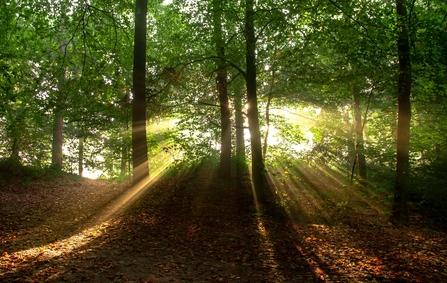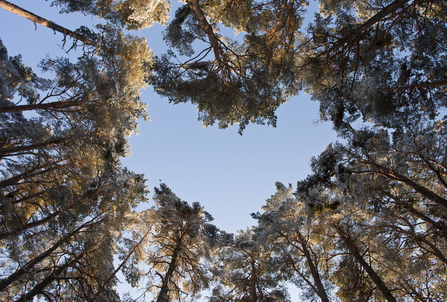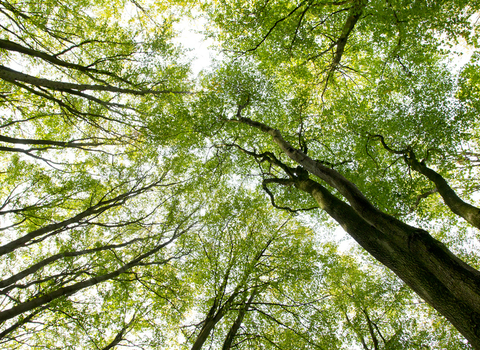What are woodlands?
These leafy, magical wonderlands provide solace, are home to wildlife and soak up carbon from the atmosphere making them an important natural solution to the climate crisis.
They are habitats dominated by trees and other foliage. In the UK, the woodlands we see today have been shaped by thousands of years of human history, including the planting of many coniferous plantations for timber in the 20th Century.
Why are woodlands so important?
Woodlands hold an important cultural heritage - with the woodlands we see today almost in their entirety shaped by human history. For many they remain a place to connect with the natural world, and are increasingly being used for the outdoor education of children, through the Forest Schools initiative.
Our woodlands are a key tool in the box when addressing climate change for their carbon storage potential, but are less well known for their potential to limit flooding events, with wet woodlands providing a great service in slowing the flow of water downstream after extreme rain events.
Woodlands are also essential habitat for much of our wildlife, from woodland flowers to birds and butterflies.

Woodland
A natural solution to the climate crisis
Our woodlands are often talked about for their carbon storing ability. What's not always known is that whilst trees and other plants lock up carbon, nearly three times as much is stored in the woodland soils that support them!
UK woodlands cover approximately 13% of land area and are estimated to soak up around 21 million tonnes of carbon dioxide a year. That's around a third of the carbon dioxide emitted by cars every year in the UK.

(C) Mark Hamblin/2020VISION
Threats and pressures
Britain remains one of the least-wooded countries in Europe and remaining areas of woodland are still under threat from development and other pressures. Woodland birds and butterflies continue their long-term declines.
Traditional ways of managing woodlands, such as coppicing (a system of periodically cutting a tree down to ground level to stimulate growth) declined significantly as demand for wood for tools and crafts fell. As a result, many woodlands have either been left unmanaged or managed for timber. This has led to structural changes within the wood, a lack of trees at different stages of growth and less suitable habitat for animals to thrive.
The arrival of new diseases like ash dieback also have far reaching consequences, changing the make-up of our woodlands. Climate change may increase vulnerability through changes in temperature, in rainfall and in the frequency and severity of storm events.
Conservation and recovery
Protecting existing woodland and expanding tree cover is vital, so that we continue to lock up more carbon naturally. But it also has other benefits: more woodland for people to enjoy, cleaner air and a natural air conditioning system in cities where urban trees are planted, reduced flood risk and - of course - more homes for wildlife!
But it's really important that new woodland creation is planned carefully to make sure it's in the right place and not planted over the top of other valuable habitats like peatland or grassland, as this can lead to the release of carbon, rather than the opposite. The type of woodland is also important, with mixed native woodland better for climate change and wildlife than plantations of single tree species. Where the trees are regularly harvested for timber as in the latter, they will only store carbon for a short time.

